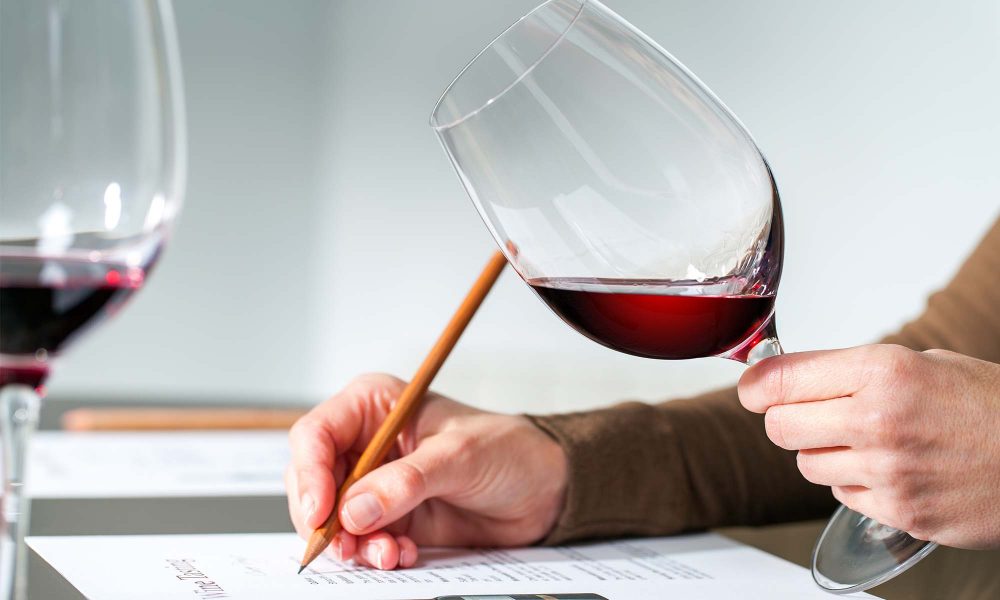The Wine & Spirit Education Trust (WSET) Systematic Approach to Tasting Wines teaches anyone -from an enthusiastic beginner to an aspiring expert – how to taste wine in a logical manner. It’s designed to build your skills at identifying key aromas and flavour characteristics.
Where do I start?
- First, make sure you have a clean palate – ie no toothpaste or coffee.
- Second, grab a notebook to jot down your observations.
Now, follow the three key steps:
Appearance
First, study how the wine looks in the glass. If it’s clear, it should be good to drink. If it’s dull or hazy, it could be faulty.
Next, assess the colour. With reds, a purplish colour shows the wine is young and a tawny colour indicates age or oak ageing. For whites, a green tinge indicates a young wine and a deeper gold colour hints at an older wine.

Judging the appearance of a wine
Nose
Now you need to smell the wine. Swirl it in the glass (to release aromas) then take a sniff. Hopefully you’ll pick up pleasant aromas – but if it smells musty or damp, the wine could be corked. Now try and identify the different aromas – do they remind you of fruits, vegetables, flowers or spices? There will rarely be just one aroma. Like a musical chord, there will always more than one note.
Palate
Now for the fun bit! Take a generous sip and let the wine coat your mouth. Consider two things – how does it taste and how does it feel?
The flavours, and their intensity, should be largely identical in your mouth as on the nose – but may be slightly more or less pronounced. You can now make a call on how sweet or dry the wine is and how it feels in your mouth. A light wine will generally be lower alcohol and a heavier wine more alcoholic – but there are no hard and fast rules.
If this exercise has given you a taste for learning more, visit wsetglobal.com to find out more about WSET courses and where you can take them and download our tasting notes app to help guide your tastings!



